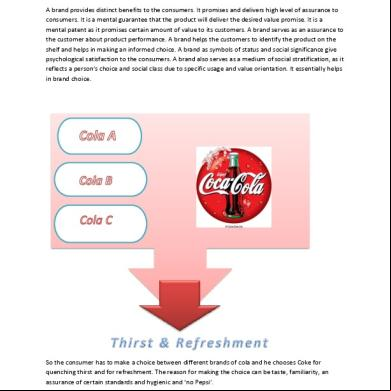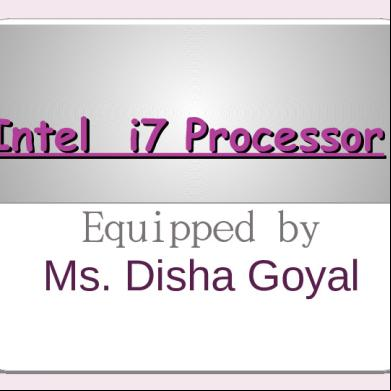Advantages And Disadvantages Of Marginal Costing 3w4px
This document was ed by and they confirmed that they have the permission to share it. If you are author or own the copyright of this book, please report to us by using this report form. Report 3b7i
Overview 3e4r5l
& View Advantages And Disadvantages Of Marginal Costing as PDF for free.
More details w3441
- Words: 373
- Pages: 2
Advantages and Disadvantages of Marginal Costing Advantages 1.
2.
More efficient pricing decisions can be made, since their impact on the contribution margin can be measured. Marginal costing can be adapted to all costing system.
3.
Profit varies in accordance with sales, and is not distorted by changes in stock level.
4.
It eliminates the confusion and misunderstanding that may occur by the presence of over-or-under-absorbed overhead costs in the profit and loss .
5.
The reports based on direct costing are far more effective for management control than those based on absorption costing. First of all, the reports are more directly related to the profit objective or budget for the period. Deviations from standards are more readily apparent and can be corrected more quickly. The variable cost of sales changes in direct proportion with volume. The distorting effect of production on profit is avoided, especially in month following high production when substantial amount of fixed costs are carried in inventory over to next month. A substantial increase in sales in the month after high production under absorption costing will have a significant negative impact on the net operating profit as inventories are liquidated.
6.
Marginal costing can help to pinpoint responsibility according to organizational lines: individual performance can be evaluated on reliable and appropriate data based on current period activity. Operating reports can be prepared for all segments of the company, with costs separated into fixed and variable and the nature of any variance clearly shown. The responsibility for costs and variances can then be more readily attributed to specific individuals and functions, from top management to down management.
Disadvantages of Marginal Costing 1.
Difficulty may be experienced in trying to segregate the fixed and variable elements of overhead costs for the purpose of marginal costing.
2.
The misuse of marginal costing approaches to pricing decisions may result in setting and selling prices that do not allow the full recovery of overhead costs.
3.
Since production cannot be achieved without incurring fixed costs, such costs are related to production, and total absorption costing attempts to make an allowance for this relationship. This avoids the danger inherent in marginal costing of creating the illusion that fixed costs have nothing to do with production.
2.
More efficient pricing decisions can be made, since their impact on the contribution margin can be measured. Marginal costing can be adapted to all costing system.
3.
Profit varies in accordance with sales, and is not distorted by changes in stock level.
4.
It eliminates the confusion and misunderstanding that may occur by the presence of over-or-under-absorbed overhead costs in the profit and loss .
5.
The reports based on direct costing are far more effective for management control than those based on absorption costing. First of all, the reports are more directly related to the profit objective or budget for the period. Deviations from standards are more readily apparent and can be corrected more quickly. The variable cost of sales changes in direct proportion with volume. The distorting effect of production on profit is avoided, especially in month following high production when substantial amount of fixed costs are carried in inventory over to next month. A substantial increase in sales in the month after high production under absorption costing will have a significant negative impact on the net operating profit as inventories are liquidated.
6.
Marginal costing can help to pinpoint responsibility according to organizational lines: individual performance can be evaluated on reliable and appropriate data based on current period activity. Operating reports can be prepared for all segments of the company, with costs separated into fixed and variable and the nature of any variance clearly shown. The responsibility for costs and variances can then be more readily attributed to specific individuals and functions, from top management to down management.
Disadvantages of Marginal Costing 1.
Difficulty may be experienced in trying to segregate the fixed and variable elements of overhead costs for the purpose of marginal costing.
2.
The misuse of marginal costing approaches to pricing decisions may result in setting and selling prices that do not allow the full recovery of overhead costs.
3.
Since production cannot be achieved without incurring fixed costs, such costs are related to production, and total absorption costing attempts to make an allowance for this relationship. This avoids the danger inherent in marginal costing of creating the illusion that fixed costs have nothing to do with production.










